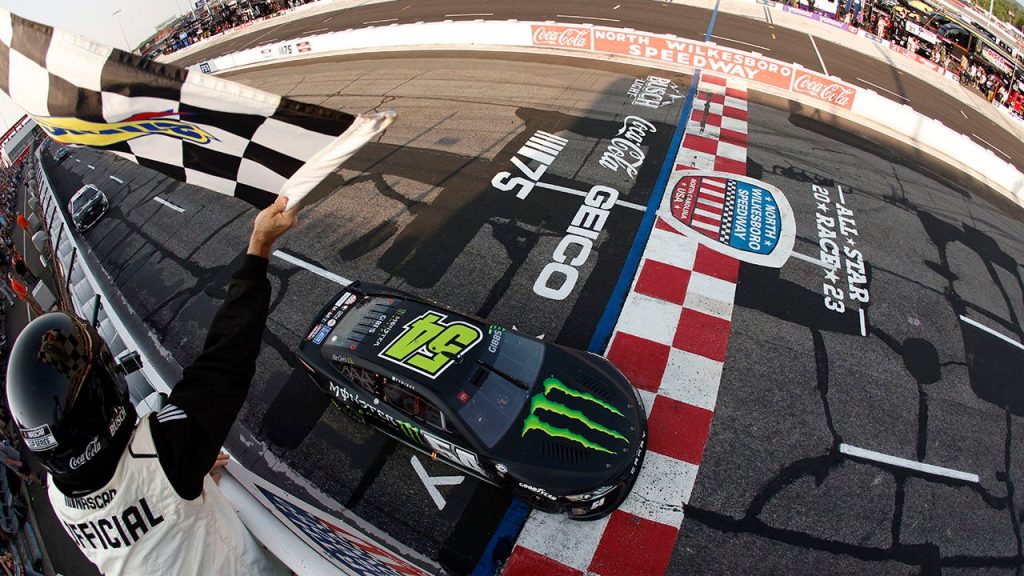The history of NASCAR is deeply connected to the illegal moonshine trade during the Prohibition Era. Recently, officials at North Wilkesboro Speedway in North Carolina revealed that a long-rumored secret moonshine hold may have been discovered underneath one of the grandstands thanks to a sinkhole. The area, measuring around 700 square feet, was found during a cleaning operation at section N of the track. While no moonshine still has been found yet, an interior wall that would have been perfect for making illegal liquor and hiding from the law was uncovered. Officials are continuing to explore the area for more potential discoveries.
During renovations and restoration efforts at North Wilkesboro Speedway in 2022, stories of an old moonshine still operating under the grandstands were frequently heard. Although initial excavations have not yet revealed a still, the discovery of a small cave and an interior wall has fueled speculation about the possibility of more hidden secrets waiting to be uncovered. Staff have removed around 600 seats in the affected area and are determining the next steps for repairs before the NASCAR All-Star Race scheduled for May 14-19. There is still a significant amount of work to be done before fans can return to the track for the race.
Wilkes County, North Carolina, was once considered the hub of the moonshine industry in the state, requiring fast and skilled drivers to transport the illegal liquor through backroads at night. This led to competitive racing between drivers, eventually forming the foundation of NASCAR. North Wilkesboro Speedway, one of the original NASCAR tracks, opened in 1947. After closing in 1996, the track fell into disrepair before being revitalized and reopening in 2023 for the NASCAR All-Star Race. The rich history of moonshining and racing in the region continues to play a significant role in the heritage of NASCAR.
The discovery of a potential moonshine hold at North Wilkesboro Speedway adds another layer to the already fascinating history of NASCAR. Moonshining activities during the Prohibition Era not only contributed to the origins of stock car racing but also shaped the culture and traditions of the sport. The competitive spirit and skilled driving required for transporting moonshine laid the groundwork for the intense races and fierce rivalries that define NASCAR today. As officials continue to explore the hidden areas beneath the grandstands, the possibility of uncovering more secrets from the past adds an intriguing element to the ongoing restoration efforts at the historic track.
The renovation and restoration efforts at North Wilkesboro Speedway reflect a commitment to preserving the heritage and history of NASCAR. By restoring the track to its former glory and uncovering potential relics of the past, officials are honoring the roots of the sport and sharing its rich legacy with fans and enthusiasts. The discovery of a possible moonshine hold under the grandstands not only adds a sense of mystery and intrigue but also highlights the deep connections between NASCAR and the region’s moonshining history. As preparations continue for the NASCAR All-Star Race, the significance of North Wilkesboro Speedway as a historic venue in the sport’s history becomes even more apparent.
The uncovering of a potential moonshine hold at North Wilkesboro Speedway offers a glimpse into the often overlooked history of NASCAR’s origins. By delving into the past and revealing hidden secrets beneath the grandstands, officials are shedding light on the intertwined histories of moonshining and stock car racing. The continued exploration of the site and efforts to restore the track for future races serve as a tribute to the enduring legacy of NASCAR and its deep-rooted connections to the illicit activities of the Prohibition Era. As fans eagerly anticipate the NASCAR All-Star Race at North Wilkesboro Speedway, they are not only witnessing thrilling races but also experiencing a living testament to the storied past that shaped the sport into what it is today.


